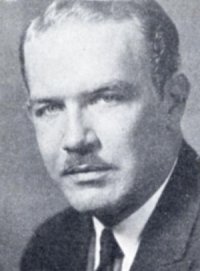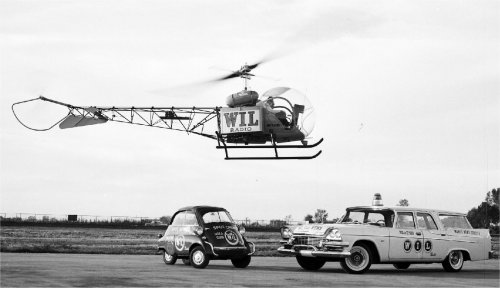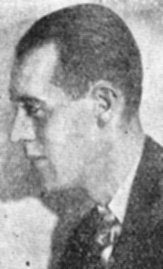By Nancy Frazer
Invisible To Their Audience, These Modern Master Showmen Must Use Their Descriptive Powers And Vocal Tricks With Split Second Efficiency
Circus ringmasters without the whips – and without silk hats; [this] describes announcers as I see it.
Without the blare of the circus top and the rollicking music which would make anything colorful, these subtle-toned masters of ceremonies get the listener in the proper mood to accept and appreciate each separate program. The can conjure up a picture as impelling as ever, these figures of another era, through tinsel, gay moving crowds and stentorian tones which exhorted each and every one to “see the daredevil defy death for your amusement” ever got.
Through intonations and facile voice shadings, announcers in charge of programs visualize the act about to go on in their minds and then parade it over the ether waves with all the reality of a real show. It’s a gift and it is a new school of showmanship that radio has brought about.
When radio was young, entertainers were put on the air to put themselves across but that was a long time ago. The program which does not have an announcer to prepare the public for it is a rarity in these days. In fact, the manner in which a program gets over is largely due to how the announcer handles it and the mood into which he gets his listeners to experience it.
Perhaps when television gets into full swing they will go back to the colorful garb which so characterized their forebears in the field, but that is only a conjecture, for who could imagine six-foot-two Billy Lang, announcer at WIL in swashbuckling garb and a shiny top hat!
In addition to being on regular schedule to take charge of programs, most of them at the different stations have special programs or take part in different features presented throughout the day. It isn’t exactly an easy life to be constantly on call with split second precision nor is it exciting but these men have larger followings and greater possibility for popularity than real ringmasters ever had.
There are four at each, KMOX, KWK and WIL who divide up the eighteen hours of the broadcasting day.
France Laux, senior announcer at KMOX, handles all the baseball broadcasts as well as the sports announcements, and does straight announcing for part of the evening broadcasts.
Holland Engle’s voice is heard from remote control and he splits the evening announcements with France Laux. He is Uncle Jim on the Pet Koko program, sings as Dr. Coocoo several times a week and is one of the continuity writers in his spare moments.
Bob Holt is regular announcer in the afternoon and at night and conducts the daily “Farm and Home Hour.”
Harold Bolande (accent on the last syllable) is a recent acquisition from WDAF Kansas City, and is the first voice heard on the station in the morning. He announces what programs there are in the morning before eight o’clock, reads the news flashes and conducts the Public Interest program each Monday.
Ray Schmidt assists France Laux at the baseball broadcasts and relates the thrilling events at all boxing and wrestling matches.
At KWK, Bob Thomas is the Senior announcer and is in charge of the sports broadcasts as well as being vice-president of the station. He helps prepare the stunts that are provided daily during the Frank and Ernest program as well as being Ernest of the team.
John Harrington, powerful and six feet in height, does some of the sports reviews and is on schedule in the night and afternoon as is Del King. Del King does two vocal broadcasts each week and is on the Dad and Jean and Helen and Henry programs each morning. Bill Vincent, who is in reality Bill Hirth, continuity writer, serves as pinch-hitter when someone doesn’t show up at the proper moment or fills out when the others are taking their vacations.
Franklyn MacCormack, beloved as the Old Captain of the Dream Boat program at WIL, is also program director at the station. He announces the features in the morning and splits the work at night.
Neil Norman has appeal as a commercial announcer and is on duty in the afternoon and at night as is Billy Lang, who also handles the remote control broadcasts and is heard nightly on the Night Watchman program.
Garnett Marks, who has recently come to the station starts off the broadcasting day at seven o’clock and announces until nine. He is the news announcer during the morning.
Throughout the day when the minute shows are paraded these men figuratively crack the whip for each ring presentation.
(Originally published in Radio and Entertainment 6/25/32).


